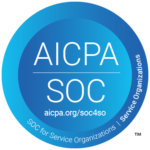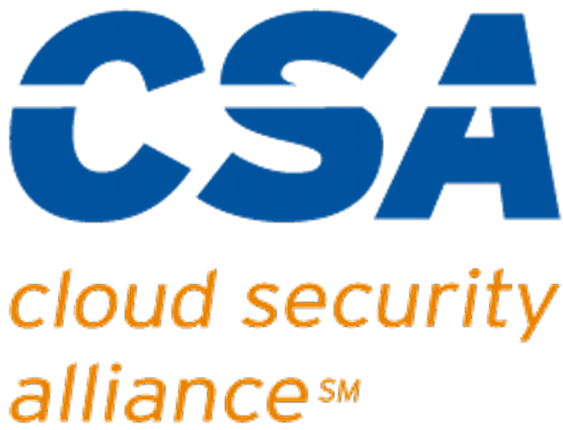Fast-paced modern businesses face a persistent challenge: effectively training employees on new technologies while maintaining productivity and morale. According to recent industry surveys, nearly 70% of IT initiatives fail to meet their objectives due to inadequate user adoption and training issues. The all-too-common “deploy now, train later” approach isn’t cutting it anymore.
At Datacate, we’ve observed firsthand how technology training challenges can cascade into broader operational problems. When employees struggle with new tools and systems, productivity drops, frustration rises, and the expected ROI from technology investments evaporates. But there’s good news – a fundamental shift in approach can transform these outcomes.
Why Traditional Tech Training Falls Short
Traditional IT support and training models often prioritize technology over people. They focus on features and functions rather than how humans interact with systems in their daily workflows. This approach typically leads to:
- Information overload with one-size-fits-all training sessions
- Disconnection between training and actual job responsibilities
- Poor timing (training too early or too late in implementation)
- Lack of ongoing support when questions inevitably arise
- Failure to address varying technical comfort levels among staff
The result? Employees memorize just enough to get by, develop workarounds that thwart productivity and create security risks, or resist adoption altogether.
The People-First Philosophy: A Paradigm Shift
A people-first approach to IT support and training flips the traditional model on its head. Instead of starting with technology specifications, it begins by understanding the people using the technology – their needs, workflows, challenges, and varying technical aptitudes.
This philosophy recognizes that technology exists to serve people, not the other way around. It acknowledges that successful technology adoption isn’t just about technical proficiency but also about emotional factors like confidence, comfort, and feeling supported.
Key Elements of a People-First Approach to Tech Training
1. Personalized Learning Pathways
One of the biggest failures in traditional IT training is the “fire hose” approach, which blasts everyone with the same information regardless of their role, existing knowledge, or learning style.
A people-first approach creates differentiated learning paths based on the following:
- Job function and how the technology applies specifically to their role
- Existing technical proficiency levels
- Preferred learning styles (visual, hands-on, self-paced, etc.)
- Immediate vs. advanced needs
By tailoring training to individual needs, organizations see dramatically higher retention rates and faster proficiency development.
2. Just-in-Time Support Systems
Even the best training can’t anticipate every question or scenario users encounter. People-first organizations implement robust, accessible support systems that provide help exactly when users need it:
- Searchable knowledge bases with scenario-based solutions
- Peer champions who provide floor support during transitions
- Quick-reference guides for common tasks
- Chat-based support for immediate questions
- Screen recording tools that allow users to demonstrate issues easily
“The most effective training isn’t training at all – it’s creating an environment where help is available at the moment of need,” explains IT training expert Josh Bersin.
3. Empowerment Through Self-Service Options
A key element in the people-first approach is acknowledging that employees want agency and control. Self-service options respect users’ time and intelligence while reducing support burden:
- Self-service portals for common IT requests
- User-customizable dashboards and interfaces
- On-demand training videos and tutorials
- Clear documentation for troubleshooting common issues
- Permission to customize workflows within security parameters
4. Recognition and Feedback Loops
People-first training includes robust feedback mechanisms that accomplish two crucial goals:
First, they allow trainers to continuously improve materials and address gaps. Second, they create opportunities to recognize and celebrate progress, dramatically increasing engagement and persistence when learning curves get steep.
Effective feedback systems include:
- Short pulse surveys after training modules
- Usage analytics to identify adoption patterns and struggles
- Recognition programs for early adopters and peer mentors
- Forums for sharing tips and creative solutions
- Regular check-ins to address emerging questions
5. Supportive Leadership Models
Executive and management buy-in goes beyond approving training budgets. In a people-first approach, leaders:
- Demonstrate personal commitment by participating in training
- Allow for productivity dips during transition periods
- Recognize and reward learning efforts, not just outcomes
- Communicate clearly about why changes matter
- Remain visible and supportive throughout implementation
When leaders model patience and commitment to learning, employees feel safer acknowledging challenges rather than hiding them.
Implementation: Making the Shift to People-First
Transitioning to a people-first approach requires planning:
- Start with listening: Before designing training, conduct interviews and observations to understand current workflows, pain points, and what users actually need
- Build a diverse implementation team: Include representatives from different departments, technical backgrounds, and learning styles
- Create a multi-phase approach: Begin with essentials, then layer in advanced features after establishing basic comfort
- Establish clear metrics: Define what success looks like beyond completion rates – measure actual adoption, efficiency gains, and user confidence
- Budget for ongoing support: Allocate resources for initial training and continued learning and assistance
Measuring Success: The Business Impact of People-First Training
Organizations that implement people-first approaches to technology training report significant benefits:
- 60% faster time-to-proficiency on new systems
- 40% reduction in support tickets
- 35% improvement in user satisfaction scores
- 25% higher ROI on technology investments
- Substantial reduction in shadow IT and security risks
Beyond these metrics, companies report less tangible but equally valuable outcomes: increased collaboration, greater willingness to embrace future changes, and more employee-driven innovation.
Case Study: Transforming Resistance to Enthusiasm
A mid-sized financial services firm struggled with implementing a new CRM system. After two failed attempts using traditional training methods, they shifted to a people-first approach:
- They identified informal leaders from each department to serve as “tech champions”
- Training was restructured into role-specific micromodules
- They implemented a points system that rewarded both learning and helping colleagues
- Executive team members participated in training alongside staff
The result? Within three months, adoption reached 94% (compared to 45% in previous attempts), and the company documented a 28% improvement in client response times.
The Datacate Difference: People-First IT Support in Action
At Datacate, people-first isn’t just a training philosophy – it’s how we approach every aspect of IT support and managed services. We understand that technology only delivers value when people feel confident, supported, and empowered.
Our support team focuses on:
- Building relationships, not just resolving tickets
- Explaining the “why” behind recommendations
- Adapting solutions to your team’s unique workflows
- Providing training that respects different learning styles
- Creating sustainable knowledge transfer, not dependency
Beyond Support: Datacate’s Enterprise-Class Data Center Advantage
Of course, even the best people-first support requires robust infrastructure to deliver consistent results. That’s why Datacate’s locally owned and operated data center provides the perfect foundation for businesses seeking reliability and peace of mind.
Our enterprise-class facility offers strategic advantages that national providers can’t match:
- Locally owned and operated: When you call, you speak with someone who understands the local business landscape and your specific needs
- Strategic location: Our Sacramento Valley location provides optimal connectivity while minimizing natural disaster risks
- 24/7 staffing: Unlike facilities with remote monitoring only, our data center is staffed around the clock by professionals who can respond immediately to any situation
- Enterprise-class infrastructure: Redundant power, cooling, and network systems ensure your critical systems remain available when you need them most
- Compliance-ready environment: Our facility helps maintain compliance with various regulatory requirements, including HIPAA and PCI DSS
Moving Forward: People-First Technology in Your Organization
Technology challenges will always exist, but the frustration, resistance, and productivity losses commonly associated with them don’t have to be part of the equation. By putting people at the center of your IT support and training strategy, you can transform tech transitions from pain points to opportunities for growth and improvement.
Ready to experience the difference a people-first approach can make for your organization’s technology challenges? Contact Datacate today to learn how our IT support services and enterprise-class data center can transform your technology experience.




